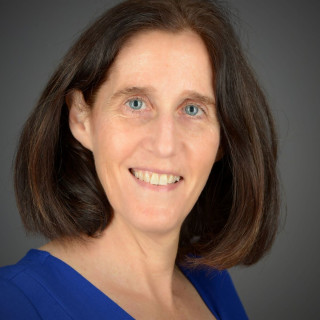
“PSA — worms are everywhere when it rains so be careful not to step on the long boys.” My son tweeted that on a recent spring day. He is a quirky, funny, awkward, sweet kid. He cares about all living creatures — even worms.
Four years ago, my son was actually my daughter.
While reading outside in my backyard on a beautiful sunny summer day, I received a text from my then 14-year-old daughter. She was away with her friend and her friend’s family. I figured she was just checking in. Instead, her text was life changing.
“I’m agender. Please use the pronouns “they” and “them” for me.
“What?” I shouted, spitting out the water I just sipped. What the heck did this mean?
I wouldn’t normally have such a deep conversation through texts, but I thought she may have felt more comfortable communicating this way or didn’t have a private place to talk. Either way, she was trying to “talk” to me, and I wasn’t about to lose the moment.
I had so many questions about why she was questioning her gender, why she needed to label herself — why, why, why? And since we all had masculine and feminine qualities, why did she consider herself to have no gender?
For many of my questions she had no answer or wasn’t sure. Innately, she felt that she was not a he or she, but non-binary.
I knew something heavy had been burdening her over the previous year, and she wouldn’t or couldn’t tell me what. She wasn’t my usual bubbly, smiling, laughing, always-sure-of-herself child. She had been more withdrawn; her straight As in school were starting to falter, and she was gaining weight rapidly.
For the next couple years, we spent many hours with school counselors, teachers, administrators and tutors to flesh out her school issues and find assistance. Then many visits to a therapist to discuss my child’s gender identity and depression. And ultimately, we sought help through a gender clinic which led to a plastic surgeon. Along the way, there were many dark days for both of us, each struggling to find a path through our own angst.
I now call my child “he” and “him.” Over the years, he discovered that he identifies as male, rather than non binary, and has since changed his name to Eli. He is in a much better place overall despite the challenges of coming out as transgender and his personal challenges with anxiety. With his transformed male chest and men’s clothes, he feels more comfortable in his body, allowing him to tackle life with greater confidence.
But as a parent, I fear for my child. Luckily, he has a supportive family, supportive friends, and for now, is attending a supportive college. But he won’t be in college forever. I worry about his acceptance in a world where others may judge, hate, or misunderstand him without even knowing him.
Gender identity refers to what gender a person internally feels and how they present themselves. A person’s gender may not match their biological sex assigned at birth. Some may not feel that their gender conforms to the male/female “binary” system and consider themselves “non-binary.” Others feel they are gender fluid and express their gender as male sometimes and female other times. Transgender also describes those who identify as the opposite gender of their biological sex.
As my son explained to me after realizing he identified as male, “You don’t even think about being female, right mom? Like it just feels right to you. Well, that’s how I feel about being male, except I’m stuck in a woman’s body.”
Gender identity is completely different than sexual orientation. Just because a person may identify as a certain gender does not tell you anything about who a person is attracted to romantically. Women may be attracted to men, women, transgender people, or all or none of the above. The same is true for men or trans individuals. Knowing someone’s gender identity is separate from knowing their sexual orientation.
In the transgender world, gender transformation is not black and white either. For some, it’s wearing clothing of the gender they identify with or changing their name to match their preferred gender. For others, it can be taking hormones and/or having gender reassignment surgery, which also has a spectrum of options — “top” surgery and “bottom” surgery. There is no set order for these transition choices — sometimes it is based on factors like cost, access, and insurance which may limit an individual’s options. For my son, having top surgery to create a male chest was of immediate importance to him. Hormone therapy is currently on the back burner, as he’s not ready to embark down that road yet.
Although I am a healthcare provider, I am at a loss about where to take him for his medical care. I feel I need to vet the doctor before my son goes for an appointment in order to make sure the doctor is trans friendly. When I took him home after his outpatient top surgery, he was in a lot of pain and nauseous. I was afraid to take him to an ER if I couldn’t manage his pain and nausea at home. How would he be treated? Would he be judged, ridiculed, receive lesser quality of care? Or was I worried for nothing?
In all honesty, I feel like I need to vet every aspect of his life as a mama protecting her young. But I also know that, at some point, he must face these challenges on his own and find his own way navigating the world. Some days, I have to stop myself as I see he already has done many things to advocate for himself — challenging his high school administration to have gender-neutral bathrooms, starting the gay-straight alliance (GSA) in his high school to create a confidential safe place for those in the LGBT community as well as allies of the community, and presenting at his college a panel discussion of what it’s like to be transgender.
For myself, I still have a lot to learn about this new world. When I was told “it’s a girl” at Eli’s birth, I never imagined my child would be anything but a girl. To assist me in my own transition, I have sought guidance including attending a transgender parent support group. In my work, although I try to apply what I’ve learned, I still find myself a little awkward openly questioning my patients about gender and sexual orientation. I’m afraid, through my stiffness, I may offend someone. Ultimately, my hope is to create a safe space for my patients to feel heard and accepted while also advocating for their health and specific health needs.
That is what I hope my son finds too.
For more explanations of gender and sexuality, check this resource: LGBT A-Z glossary
Andrea Eisenberg, MD has been an obstetrician/gynecologist in the Metro Detroit area for nearly 25 years. Through her many years in women’s health, she has shared in countless intimate moments of her patients, and shared in their joys, heartaches, secrets, losses and victories. In her writing, she captures the human side of medicine and what doctors think and feel in caring for patients. She has documented these stories on her blog, www.secretlifeofobgyn.com. She has been a contributor to Intima, A Journal of Narrative Medicine and Pulse, Voices From the Heart of Medicine. Andrea is also a contributing author at BBN Times and a guest rotating blogger on KevinMD and Doximity. She is currently in Doximity’s 2018–2019 Authors Program.







